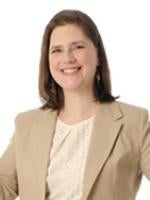Tuesday, the United States Supreme Court issued a unanimous (9-0) decision in Mayo Collaborative Servs. v. Prometheus Labs., Inc. In holding that Prometheus’s claims were not eligible for patenting, the Court stated that the claims sought to protect “the underlying laws of nature themselves” (Slip Op., p. 24), rather than a specific application of those laws of nature. The Court further emphasized that, although a claim may recite a law of nature, the novel and nonobvious aspects of the claim must be separate from the law of nature. That is, in evaluating claim elements that are separate from the law of nature recitation, the §101 patent-eligibility inquiry and inquiries under §§102, 103, and 112 may overlap. (Id. at p. 21.) Although this Opinion was issued in the context of a diagnostic method, the positions taken by the Court affect other technologies as well.
The Claim
A method of optimizing therapeutic efficacy for treatment of an immunemediated gastrointestinal disorder, comprising:
(a) administering a drug providing 6-thioguanine to a subject having said immune-mediated gastrointestinal disorder; and
(b) determining the level of 6-thioguanine in said subject having said immune-mediated gastrointestinal disorder, wherein the level of 6-thioguanine less than about 230 pmol per 8x108 red blood cells indicates a need to increase the amount of said drug subsequently administered to said subject and wherein the level of 6-thioguanine greater than about 400 pmol per 8x108 red blood cells indicates a need to decrease the amount of said drug subsequently administered to said subject.
What does this mean for diagnostic methods and personalized medicine?
The holding in Prometheus should not wholly preclude innovative diagnostic and personalized medicine methods from patent eligibility. But claims will need to include “other elements or combination of elements, sometimes referred to as an “inventive concept,” sufficient to ensure that the patent in practice amounts to significantly more than a patent upon the natural law itself.” (Id. at p. 3.) In other words, for a claim reciting a “law of nature” to be patent-eligible, the remaining elements or combination of elements in the claim must be patentable (e.g., novel, nonobvious, and meeting the enablement and written description requirements).
Prometheus’s claims, while reciting steps determined by the Federal Circuit to be transformative, were determined by the Supreme Court to be insufficiently “unconventional.” For example, the Court found that the “administering” step to was not new: “doctors used thiopurine drugs to treat patients suffering from autoimmune disorders long before anyone asserted these claims.” (Id. at p. 9.) Further, the Court interpreted the “determining” step to be overbroad, perhaps not enabled over its full scope, “tell[ing] the doctor to determine the level of the relevant metabolites in the blood, through whatever process the doctor . . . wishes to use.” (Id. at p. 10.) Finally, the Court interpreted the “wherein” clause in Prometheus’s claim to require no “post solution activity.” Rather, the clause was construed to be only a suggestion as to how a patient might be treated based on the natural law. In contrast, the Court distinguished a patent-eligible “law of nature” claim in the landmark 1981 Supreme Court case Diamond v. Diehr as “add[ing] to the [law of nature] something that in terms of the patent law’s objectives had significance – they transformed the process into an inventive application of the formula.” (Id. at p. 12.)
One strategy for drafting claims that recite a “law of nature” would be to include elements or combinations of elements that, in the absence of the “law of nature,” can rise above being “well understood, routine, conventional activity previous engaged in by researchers in the field.” (Id. at p. 4.) For example, upon determining the levels of a metabolite, a claim that requires a subsequent administration of a higher or lower dose of a drug based on the levels, rather than just making a “suggestion,” might come closer to making the “law of nature” patent eligible. Whether the “post-solution activity” of administering a higher or lower dose of a thiopurine drug would have been sufficient to render Prometheus’s claims patent eligible remains unclear. The Prometheus opinion provides no clear guidance on how “inventive” the elements in addition to the law of nature must be to render a claim patent–eligible. So, any patenting strategy should include an array of claims having varying scope and specificity.
Is this relevant for other technologies?
Although the underlying claims focused on diagnostic methods, the decision itself and the statements of the Court will have applicability outside that specific technology. In explaining its analysis, the Court revisited the seminal patent-eligibility cases of Diamond v. Diehr, Parker v. Flook, and Gottschalk v. Benson. Given the Court’s side-by-side comparsion of Diehr and Flook, the analysis appears to focus on two questions: if a patent claim recites a natural law (or algorithm, equation, etc.), does the rest of the claim add enough to allow the process described to qualify as a patent-eligible process that applies the natural law? (Id. at p. 8.) And if the claim does recite an application of the natural law rather than the law itself, is that application “conventional or obvious,” or does the application itself contain the “inventive concept”? (Id. at p. 13.) Including a wide array of claim elements directed to specific applications of a given natural law or algorithm might help patentees and applicants withstand a §101 attack. At the same time, Mayo v. Prometheus will certainly be a useful tool for any party looking to challenge a patent on §101 grounds.





 />i
/>i

